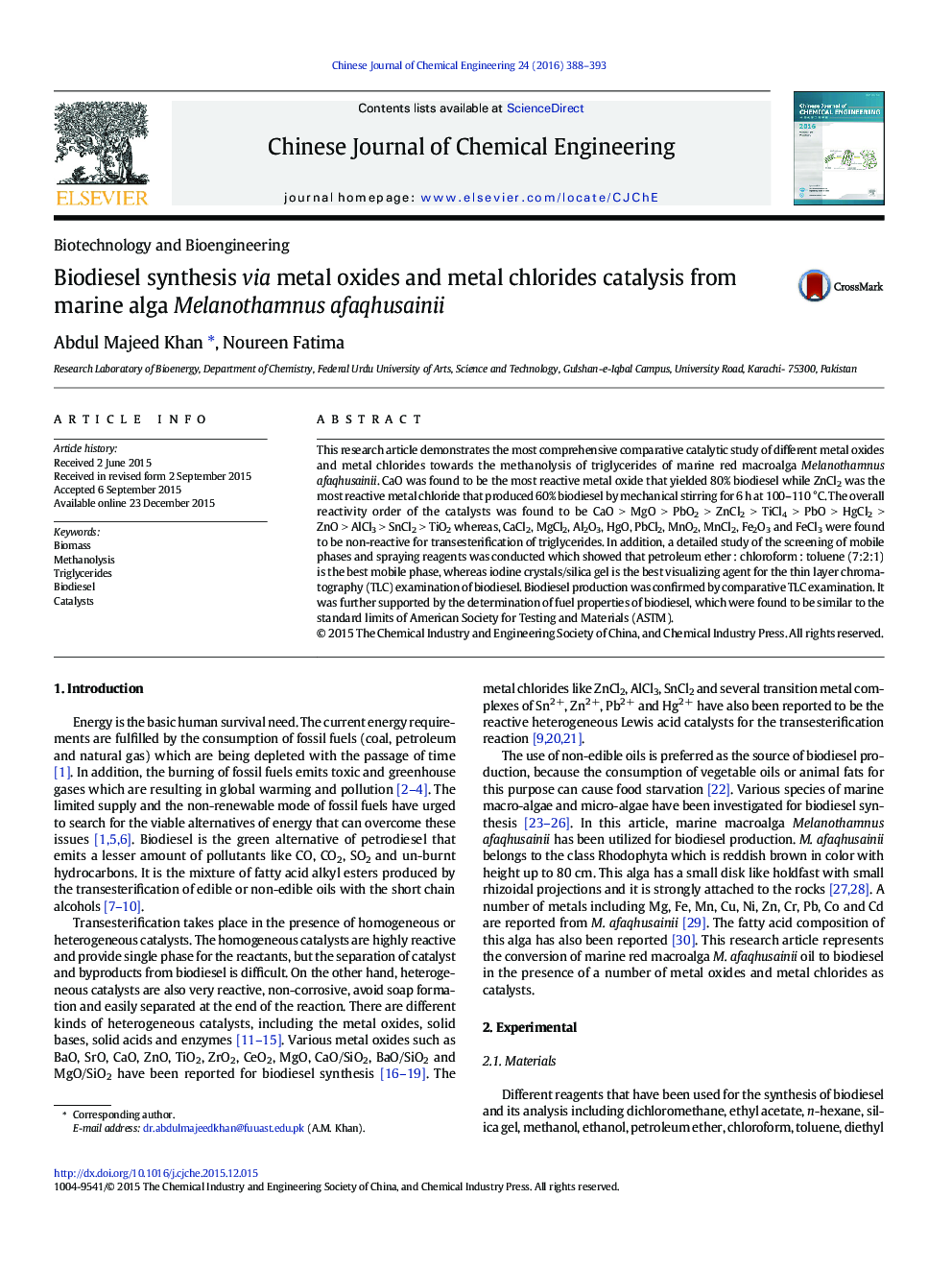| Article ID | Journal | Published Year | Pages | File Type |
|---|---|---|---|---|
| 165967 | Chinese Journal of Chemical Engineering | 2016 | 6 Pages |
This research article demonstrates the most comprehensive comparative catalytic study of different metal oxides and metal chlorides towards the methanolysis of triglycerides of marine red macroalga Melanothamnus afaqhusainii. CaO was found to be the most reactive metal oxide that yielded 80% biodiesel while ZnCl2 was the most reactive metal chloride that produced 60% biodiesel by mechanical stirring for 6 h at 100–110 °C. The overall reactivity order of the catalysts was found to be CaO > MgO > PbO2 > ZnCl2 > TiCl4 > PbO > HgCl2 > ZnO > AlCl3 > SnCl2 > TiO2 whereas, CaCl2, MgCl2, Al2O3, HgO, PbCl2, MnO2, MnCl2, Fe2O3 and FeCl3 were found to be non-reactive for transesterification of triglycerides. In addition, a detailed study of the screening of mobile phases and spraying reagents was conducted which showed that petroleum ether : chloroform : toluene (7:2:1) is the best mobile phase, whereas iodine crystals/silica gel is the best visualizing agent for the thin layer chromatography (TLC) examination of biodiesel. Biodiesel production was confirmed by comparative TLC examination. It was further supported by the determination of fuel properties of biodiesel, which were found to be similar to the standard limits of American Society for Testing and Materials (ASTM).
Graphical abstractThe graphical abstract shows the comparison of yields of biodiesel produced from Melanothamnus afaqhusainii catalyzed by metal oxides and metal chlorides. CaO was found to be the most potential catalyst from investigated metal oxide series whereas ZnCl2 was found to be the most active catalyst from metal chlorides series.Figure optionsDownload full-size imageDownload as PowerPoint slide
